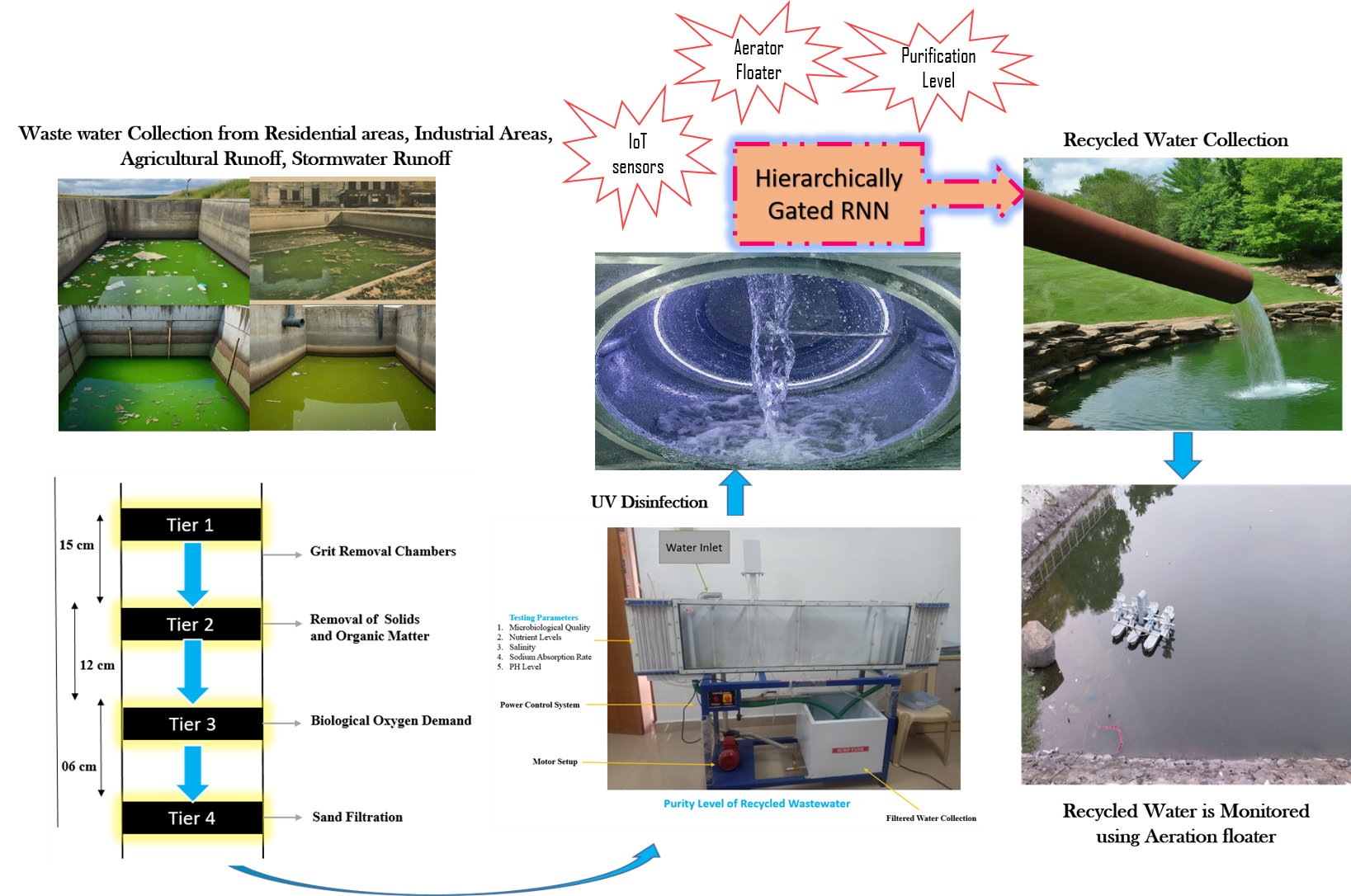- gnest_06758_in press.pdf
-
Paper IDgnest_06758
-
Paper statusAccepted manuscript

Wastewater recycling will protect the environment by reducing the quantity of contaminants released into water bodies, safeguarding aquatic ecosystems, and averting water pollution. The objective is to transform polluted ponds into clean water sources through real-time monitoring and efficient treatment by tracking water quality parameters such as pH, dissolved oxygen, turbidity, and biological oxygen demand using plotted IoT sensors. The IoT sensors continuously transmit real-time data to a cloud-based system, where the HG-RNN algorithm models complex relationships between water quality metrics to predict and optimize treatment processes. The HG-RNN is trained on historical data to predict future water quality trends and identify potential issues. Based on these predictions, appropriate treatment strategies can be implemented in real-time, such as adjusting chemical dosages or activating filtration systems. This proactive approach ensures optimal water quality and prevents further pollution.
Total file downloads: 17